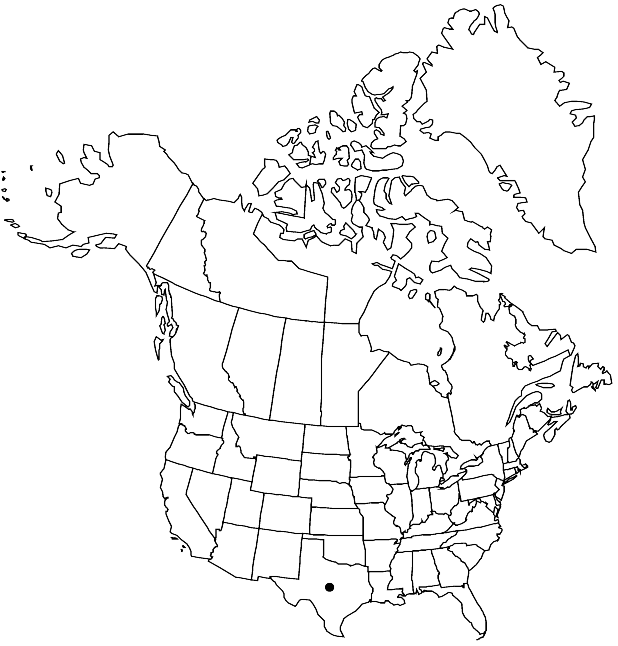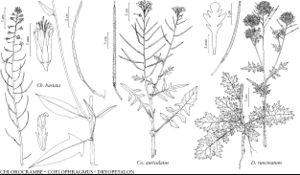Coelophragmus auriculatus
in H. G. A. Engler, Pflanzenr. 86[IV,105]: 157. 1924.
Plants glabrous or sparsely to densely pilose, at least proximally. Stems (2–)3–12(–15) dm. Basal leaves soon withered. Cauline leaves: (proximal and median) petiole 1–6 cm, shorter distally; blade oblanceolate to obovate, (2–)3–12(–17) cm × (15–)25–60(–85) mm, (smaller distally), base auriculate to amplexicaul, margins pinnatifid to runcinate, lobes: lateral ovate to lanceolate; terminal larger than lateral. Racemes densely flowered. Fruiting pedicels straight or slightly curved-ascending, 5–10(–14) mm, glabrous or pubescent. Flowers: sepals 4–5 × 1–1.5 mm, sparsely pilose; petals 6–10 × 1.5–2.5 mm, gradually narrowed to clawlike base, margins entire, glabrous; median filament pairs 2.5–4 mm, glabrous; anthers 1–1.5 mm. Fruits 2–4.2(–5.3) cm × 0.5–0.7 mm; valves glabrous or pilose; style 0.5–2.5 mm. Seeds yellowish, 0.4–0.5 × 0.3–0.4 mm.
Phenology: Flowering Mar–Nov.
Habitat: Hillsides, shallow washes, calcareous grounds, thickets, scrubby pine and oak woodland, gravelly flats
Elevation: 1200-2400 m
Distribution

Tex., Mexico (Chihuahua, Coahuila, Durango, Nuevo León, San Luis Potosí, Zacatecas).
Discussion
Collections of Coelophragmus auriculatus from Texas are known primarily from Brewster and Hudspeth counties.
Selected References
None.
